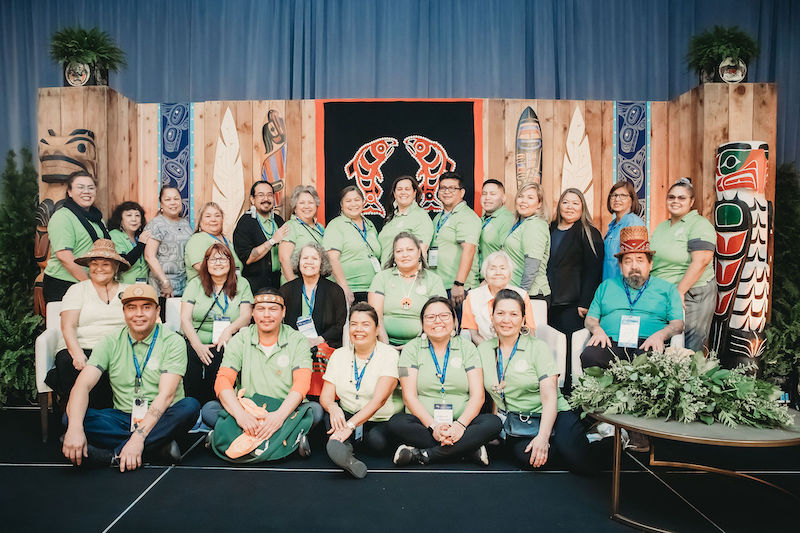A group of experts and Indigenous organizations are concerned about recent federal cuts to funding for investigations into former residential school burial sites.
After hundreds of unmarked graves were discovered at a Kamloops residential school site in 2022, Crown-Indigenous Relations and Northern Affairs Canada set aside more than $200 million to support initiatives to document deaths and commemorate the children who did not return home.
Kimberly Murray, the Independent Special Interlocutor for Missing Children and Unmarked Graves and Burial Sites associated with Indian Residential Schools, said this amount implied $5 million per year for each community that applied. But as more communities were applying for funding, Ottawa reduced the amount to $3 million.
“Then this summer they cut it to $500,000 a year,” Murray said. “Survivors and communities through their advocacy fought against that, but Canada has said it renewed the funding cap.”
As the government is trying “to optimize the use of the money,” the communities cannot use it for commemoration, but only for the ground and archival research, Murray added.
“It’s been upsetting to the communities that were in the middle of the investigation have to fight for funding, not knowing about the plan of investigation,” she said.
Murray emphasized that Canada has an international legal obligation to support the investigations because “it is the government’s fault that these kids disappeared and are missing.”
According to Murray, expenses include community gatherings, survivor testimonies, archival research, hiring experts, ground searches, detection dogs, equipment, exhumation and DNA testing if necessary.
In addition, she thinks the three-year cycle for this work is insufficient.
“Analyzing the data is very time consuming, so that adds to the cost,” Murray said. “Canada needs to stay with national legal obligations to support these investigations as long as they could.”
Beside residential schools there are other institutions, such as hospitals and sanatoriums, where Indigenous children were held in deplorable conditions and frequently died. However, she noted, “Canada won’t support searches of those grounds, and that is very problematic.”
Murray believes there should be more funding, more time and fewer restrictions from the federal government. “The government should not be controlling what communities choose to investigate. It should be Indigenous-led, and they should decide what sequence to do their investigation.”
It’s an important part of the healing process, she added, “where families who finally found their loved ones are able to do the ceremonies and lay the medicines on the burial.”
In her “Sites of Truth, Sites of Conscience” report, Murray states that in the nine years since the Truth and Reconciliation Report issued Calls to Action 71–76, very little has been done by Canada and the churches to implement them.

Photo provided by: Office of the Independent Special Interlocutor / Aboriginal Affairs and Northern Development Canada
“It will take years to complete the histories of these sites of truth and conscience and other cemeteries at institutions excluded from the IRSSA [the Indian Residential School Settlement Agreement] and at other institutions where Indigenous children were sent.”
Murray will announce recommendations during the final report event on October 29 in Gatineau.
Rebekah Jacques, a forensic pathologist from the National Advisory Committee for Residential Schools Missing Children and Unmarked Burials, believes reconciliation means taking action.
“For families who wish that their children, who died at residential schools, return home requires meaningful action through forensic work that is Indigenous-led and guided by survivors,” she said.
This action aligns with the Truth and Reconciliation Call to Action 74, which calls upon the federal government to respond to families’ wishes for reburial in home communities where requested, Jacques noted.
“In order to achieve reburial, it requires identification of the human remains and their attachment to linear descendants or belonging to their Indigenous communities,” she explained. “It is important that ceremony, cultural practices, Indigenous ways of knowing, and wellness supports are part of the foundation for this work.”
One of the myths about forensic work is a short timeframe, but “this is simply not true, and it will likely take years to complete,” Jacques said.
National Centre for Truth and Reconciliation Executive Director Stephanie Scott believes funding is an essential part of the debt of justice owed to the families whose children were forcibly taken away.
“Funding must be determined by need, not by arbitrary formulas,” Scott said. “That’s the only way to meet Parliament’s promise that every Indigenous community would have the means necessary to locate and commemorate the children who never came home.”





